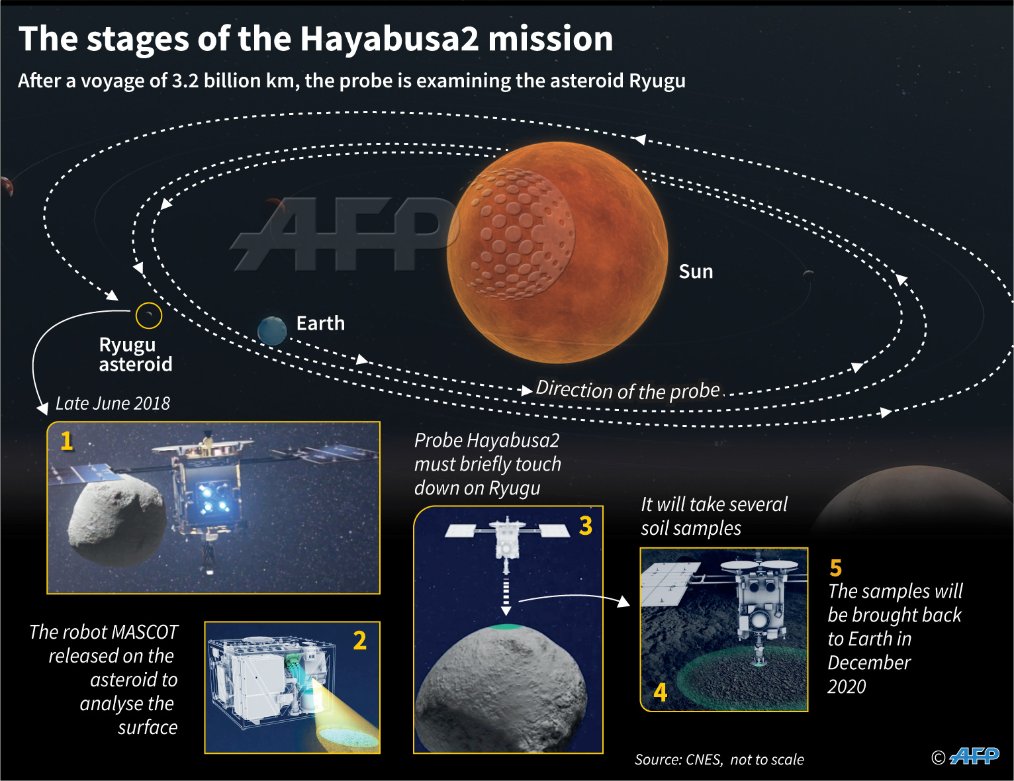Culminating a journey that began three and a half years ago, the Japanese space probe Hayabusa2 has finally reached its target: the asteroid Ryugu, which is orbiting the sun approximately 300 million kilometers from Earth.
The Japan Aerospace Exploration Agency (JAXA) gave the time of arrival as 9:35 a.m. Japan time Wednesday, Nikkei Asian Review reported.
Meanwhile, the French-German Mobile Asteroid Surface Scout, or MASCOT, launched from the Hayabusa2 probe, landed safely on Ryugu and was in contact with its team, the lander's official Twitter account said.
And then I found myself in a place like no place on Earth. A land full of wonder, mystery and danger! I landed on asteroid Ryugu! #AsteroidLanding https://t.co/EDwh99aImv
— MASCOT Lander (@MASCOT2018) 3 October 2018
"And then I found myself in a place like no place on Earth. A land full of wonder, mystery and danger!," the @MASCOT2018 account tweeted.
"I landed on asteroid Ryugu!"
MASCOT is expected to collect a wide range of data on the asteroid and bring them back home for analysis.

"It is hugely significant to take data from the surface of an asteroid, we have high expectations for the scientific data," Hayabusa2 mission manager Makoto Yoshikawa at the Japan Aerospace Exploration Agency (JAXA) told a briefing before the landing, as reported by The Jakarta Post.
According to Nikkei Asian Review, the rocks on Ryugu are thought to contain remnants of carbon and water from the time of the birth of the solar system 4.6 billion years ago. If the JAXA mission is successful, analysis of those rocks could help scientists answer questions about the formation of the solar system and the origins of life.

Ryugu has a diameter of roughly 900 meters and rotates once every 7.5 hours around an axis like a spinning top. The asteroid is pockmarked with crater-like indentations and is strewn with boulders.
Scientists expected Ryugu to be around that size, but never imagined it would have a diamond-like shape. "When we first saw that shape, we realized how hard it would be [to land on the asteroid]," mission project manager Yuichi Tsuda explained at a news conference held by JAXA.

Hayabusa2, about the size of a large fridge and equipped with solar panels, is the successor to JAXA's first asteroid explorer, Hayabusa -- Japanese for falcon.
The Hayabusa2 mission, which costs around 30 billion yen ($260 million), was launched in December 2014 and will return to Earth with its samples in 2020.



















